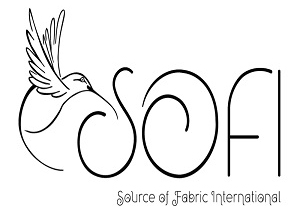Purchasing fabric wholesale opens up a world of possibilities for designers, tailors, and DIY enthusiasts. It allows them to access a vast selection of materials at lower prices, enabling creativity without breaking the bank. Whether one is starting a new fashion line or simply looking to stock up for personal projects, understanding the wholesale fabric market is essential.
Knowing where to buy, what to look for, and how to negotiate can make the difference between a successful purchase and a costly mistake. With the right strategies, anyone can tap into quality fabrics that elevate their projects. This guide will walk through the key steps to confidently navigate the wholesale fabric landscape, ensuring a smart and satisfying buying experience.
Understanding Wholesale Fabric Purchasing
Understanding wholesale fabric purchasing involves knowing what it means and the benefits it brings. This knowledge helps buyers make informed choices in the wholesale market.
What Is Wholesale Fabric?
Wholesale fabric refers to materials sold in bulk at reduced prices. Retailers and manufacturers typically sell these fabrics to fabric stores or to individuals preparing for projects. Buyers often find various types of fabrics, like cotton, linen, and polyester, at wholesale suppliers. Minimum order quantities can vary, so buyers should check requirements before placing an order.
Benefits of Buying Fabric Wholesale
Buying fabric wholesale offers several advantages:
- Cost Savings: Bulk purchasing lowers the price per yard or meter, allowing buyers to save money.
- Variety: Wholesale suppliers offer a wide range of fabric types and colors, providing more options for designs.
- Consistency: Purchasing in bulk ensures matching fabric for projects, which is crucial for larger items like dresses or upholstery.
- Accessibility: Many wholesale vendors provide online shopping, making it easier to browse and place orders.
- Networking Opportunities: Buying wholesale often connects buyers with other professionals in the industry, fostering relationships and potential collaborations.
Understanding these aspects empowers buyers to maximize their wholesale fabric purchasing experience.
Identifying Your Fabric Needs
Understanding your fabric needs is essential before purchasing wholesale. This involves recognizing the types of fabrics suitable for your projects and determining the required quantity and quality.
Types of Fabrics to Consider
When choosing fabrics, consider the following types:
- Cotton: Versatile and widely used. Perfect for clothing and home goods.
- Linen: Lightweight and breathable. Great for summer garments.
- Silk: Luxurious and smooth. Ideal for formal wear.
- Polyester: Durable and easy to maintain. Common in activewear.
- Wool: Warm and insulating. Perfect for outerwear.
- Canvas: Heavy and sturdy. Excellent for bags and upholstery.
Each fabric type serves different purposes. Identifying the right fabric helps achieve desired results in projects.
Assessing Quantity and Quality Requirements
Determining how much fabric to purchase is crucial. Calculate the amount needed based on project size and pattern repeat.
- Quantity: Order slightly more than needed to account for errors or changes.
- Quality: Assess the fabric’s feel, weight, and durability. High-quality fabrics yield better results.
Consider the end use of the fabric. Different projects may require varying levels of quality. Balancing quantity and quality leads to a successful wholesale purchase.
Finding Reliable Wholesale Suppliers
Finding reliable wholesale suppliers is essential for a successful fabric purchasing experience. It involves thorough research and evaluation to ensure quality and value.
Researching Potential Suppliers
Research potential suppliers by exploring various online platforms, directories, and trade shows. Check websites like Alibaba, Fabric.com, or local fabric markets. Look for reviews and ratings from other buyers to gauge reliability. Compare fabric types, pricing, and minimum order quantities across multiple suppliers. Identify those who specialize in the fabric types needed for specific projects.
Evaluating Supplier Reputation
Evaluate supplier reputation by checking references and testimonials. Contact previous customers to get feedback on their experiences. Investigate the supplier’s history and years in business, as established companies typically offer better service. Look for certifications or memberships in industry organizations, which indicate credibility. Pay attention to their communication responsiveness, as a prompt and professional reply reflects a reliable supplier.
Negotiating Prices and Terms
Negotiating prices and terms is essential when buying fabric wholesale. Understanding how to approach suppliers can lead to better deals and favorable conditions.
Strategies for Effective Negotiation
- Research the Market: Know the average prices for the fabrics of interest. Understanding current trends helps in discussing prices with suppliers.
- Build Relationships: Establishing good communication with suppliers can create a sense of trust, making negotiations smoother.
- Be Clear and Direct: Clearly state budget limits and desired terms. Being straightforward encourages transparent discussions.
- Ask for Discounts: Inquire about bulk purchase discounts or seasonal sales. Suppliers often offer better rates for larger orders.
- Consider Payment Terms: Discuss preferred payment methods and timelines. Flexible payment terms can be beneficial for both parties.
- Offer a Trial Order: Proposing a smaller initial order can reduce risk for both supplier and buyer. Success with a trial order may lead to larger purchases.
Understanding Minimum Order Quantities
Minimum order quantities (MOQs) indicate the smallest amount of fabric a supplier will sell. Understanding MOQs helps in planning purchases efficiently.
- Check Supplier Policies: Each supplier has different MOQ requirements. Review these before committing to ensure feasible orders.
- Assess Your Needs: Determine how much fabric is necessary for upcoming projects. This assessment guides decisions on which suppliers to approach.
- Negotiate MOQs: If a required quantity exceeds your budget, discuss the possibility of lowering the MOQ. Suppliers may be willing to make exceptions based on relationship and project potential.
- Combine Orders with Others: Teaming up with fellow designers or tailors to meet MOQs can lead to shared costs and better prices.
- Plan for Future Needs: Consider future projects when selecting quantities. Planning ahead might justify slightly larger orders to meet MOQs efficiently.
Placing Your Order
Placing an order for wholesale fabric involves several straightforward steps that ensure a smooth buying process. By focusing on key practices, buyers can minimize errors and streamline their purchases.
Best Practices for Order Placement
- Review Order Details: Check quantities, colors, and types of fabric before finalizing the order to avoid mistakes.
- Use a Clear Format: Create a simple spreadsheet listing each fabric type, quantity, and price to keep everything organized.
- Confirm Supplier Policies: Understand the supplier’s return and exchange policies, along with payment terms, to avoid surprises later.
- Communicate Effectively: Reach out to the supplier with any questions about the order to ensure clarity on both sides.
- Request an Order Acknowledgment: Ask for written confirmation of the order from the supplier to have a record of the purchase.
Handling Payment and Shipping Logistics
- Choose Payment Methods Wisely: Select secure payment options that are convenient, such as credit cards or trusted online payment services.
- Understand Shipping Costs: Compare shipping fees from different suppliers and factor these into the total cost of the order.
- Set Delivery Timeframes: Confirm estimated delivery dates with the supplier and plan the project timeline around these dates.
- Review Tracking Options: Opt for shipping methods that provide tracking to monitor the order’s status until delivery.
- Prepare for Receiving the Order: Organize storage space for the fabric before it arrives to streamline the unpacking process.
By following these steps, buyers can ensure a clear and effective ordering experience while acquiring wholesale fabric.
Upgrade Your Projects with Source of Fabric
Ready to find high-quality fabrics at unbeatable wholesale prices? At Source of Fabric, we offer an extensive selection of premium materials for all your creative needs. Whether you’re designing garments, crafting home décor, or stocking up for your business, we’ve got you covered.
Start Shopping Now
Conclusion
Purchasing fabric wholesale opens doors to cost savings and a vast selection of materials. By understanding the market and identifying reliable suppliers, buyers can confidently navigate their purchasing journey.
Effective negotiation and careful planning are essential for securing the best deals while ensuring quality. With the right strategies in place, anyone can streamline their fabric buying experience, making it both efficient and enjoyable.
Embracing these practices not only enhances project outcomes but also fosters valuable connections within the fabric industry. With the knowledge gained, buyers are well-equipped to make informed decisions that benefit their creative endeavors.
Frequently Asked Questions
What is wholesale fabric?
Wholesale fabric refers to materials sold in bulk at reduced prices. This purchasing method is popular among designers, tailors, and DIY enthusiasts as it offers significant cost savings and access to a wide variety of textiles.
Why should I buy fabric wholesale?
Buying fabric wholesale provides several advantages, including lower prices, a diverse selection of fabric types and colors, consistency for larger projects, and networking opportunities. It empowers buyers to save money while gaining access to high-quality materials.
How do I find reliable wholesale fabric suppliers?
To find reliable suppliers, research online platforms, directories, and trade shows. Check supplier reviews and ratings, verify references, and look for industry certifications to ensure they have a good reputation.
What should I consider before purchasing wholesale fabric?
Before purchasing, identify your fabric needs by recognizing suitable types, determining required quantities, and assessing quality. Consider factors such as fabric feel, weight, and durability to ensure they meet your project requirements.
How can I negotiate prices when buying wholesale?
Effective negotiation involves researching market prices, building relationships with suppliers, stating your budget, asking for discounts, discussing payment terms, and offering trial orders. This helps secure the best possible deal.
What are minimum order quantities (MOQs)?
Minimum order quantities (MOQs) are the smallest amounts of fabric a supplier is willing to sell. Understanding MOQs can help you plan your purchases efficiently and potentially combine orders with others to meet supplier requirements.
What are the best practices for placing an order for wholesale fabric?
For successful ordering, review your order details, communicate clearly with the supplier, confirm their policies, and request acknowledgment of your order. Ensure secure payment methods and clarify shipping logistics to facilitate a smooth transaction.


